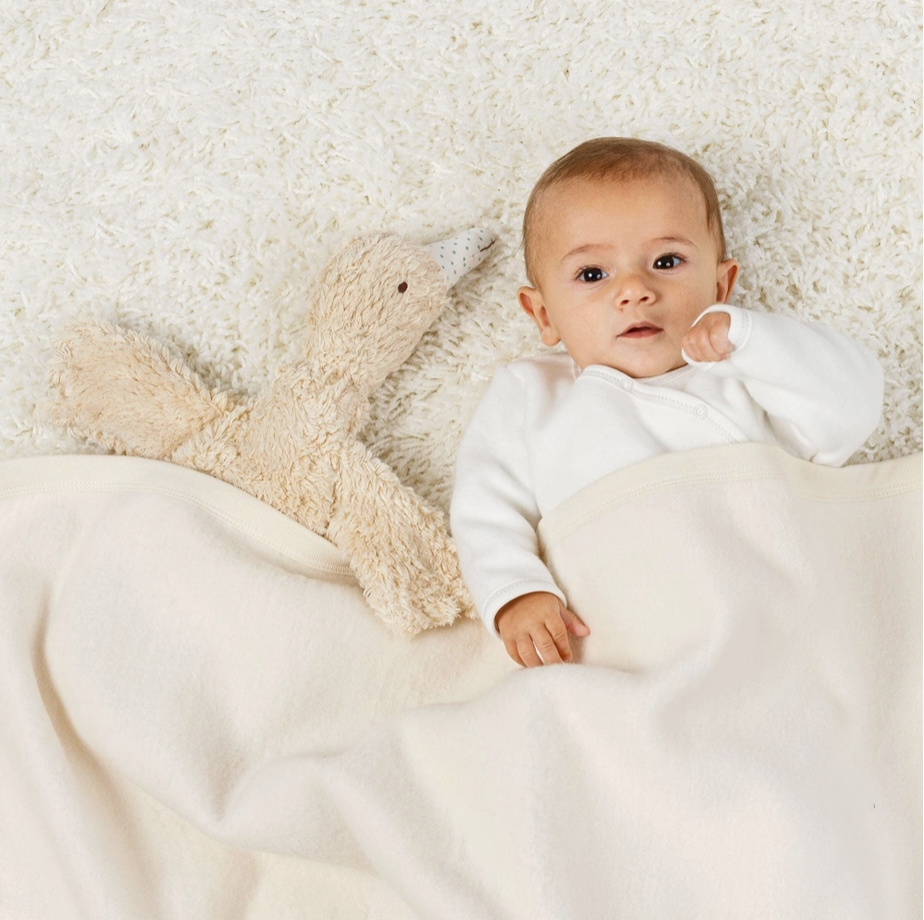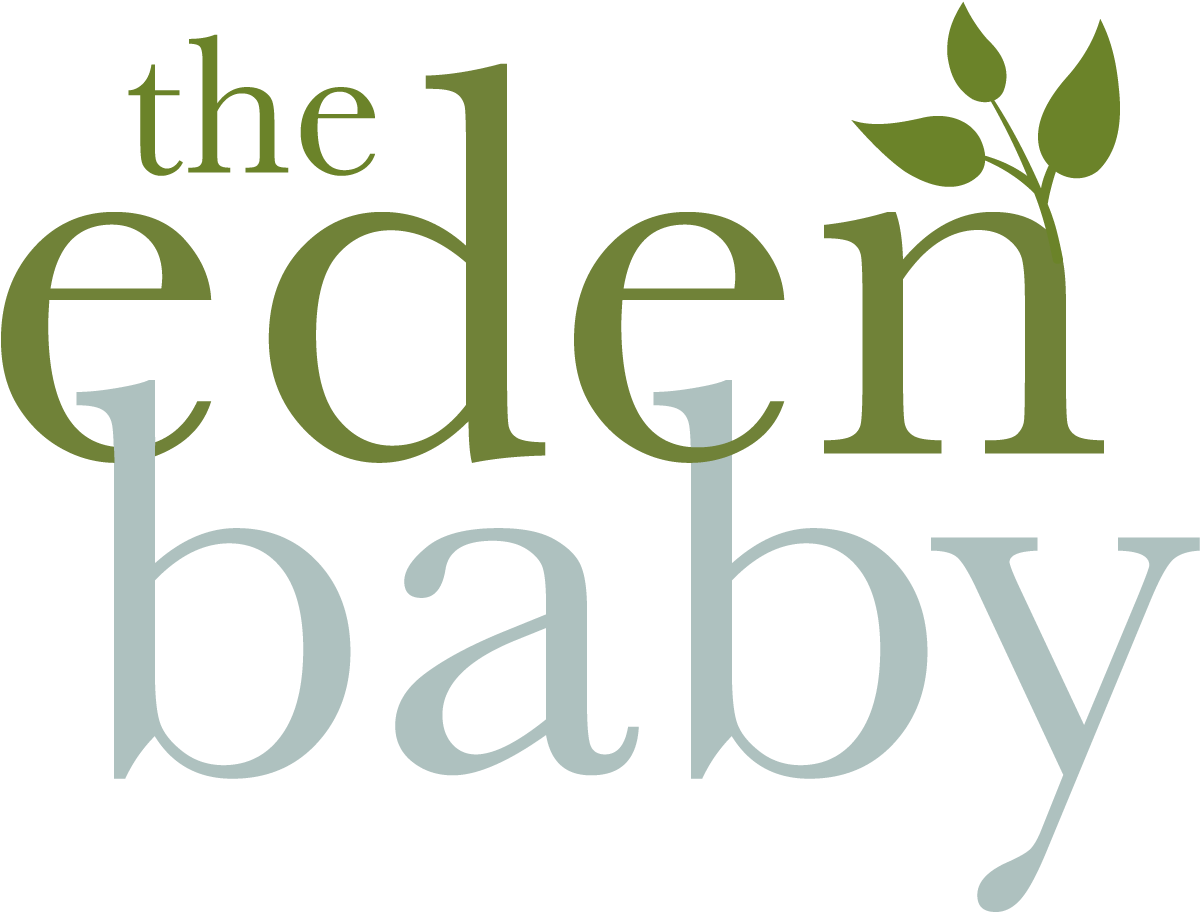
For many parents, a baby lovey is more than just a cute comfort object—it’s a lifesaver during bedtime, travel, or daycare transitions. Whether you’re new to the concept or shopping for the perfect one, understanding what a baby lovey is and how to use it safely can make a big difference in your child’s sense of comfort and routine.
At The Eden Baby, we believe a baby’s first comfort object should be as safe, soft, and thoughtfully made as possible. That’s why our non-toxic baby loveys are crafted from gentle, breathable fabrics and designed to support healthy bonding and emotional growth.
What’s a Lovey?
A baby lovey is a small, soft item—usually part blanket, part plush toy—that helps babies feel safe, calm, and comforted. Loveys are sometimes called security blankets, blankie toys, or comfort objects. They often come in the shape of a small square blanket with a plush animal head sewn in, combining the soothing texture of a blanket with the familiarity of a stuffed toy.
Unlike a full-size blanket or stuffed animal, a baby lovey is sized just right for little hands and usually features lightweight, breathable materials to reduce any risk of overheating or entanglement.
At What Age Do Babies Use Loveys?
Most babies are ready to begin bonding with a lovey between 6 and 12 months. This is around the time they start forming attachments to objects and notice when caregivers leave the room. Some babies show interest as early as 4 months, but the American Academy of Pediatrics recommends introducing a lovey for sleep only after the baby reaches 12 months due to safe sleep guidelines.
Until then, you can still use a lovey during supervised awake time—while rocking, nursing, reading, or snuggling. This helps the baby associate the lovey with feelings of comfort and security.
How to Introduce a Lovey to a Baby
Introducing a baby lovey is simple, but consistency is key. Start by choosing a safe, soft, non-toxic lovey that’s machine washable and breathable—like those offered by The Eden Baby. Then, bring it into your baby’s routine during the calmest parts of the day.
Hold the lovey between you and your baby during feedings, cuddles, or naps. Some parents even sleep with the lovey first so it takes on their scent. This helps the baby associate the item with comfort and connection.
Once your baby shows interest in holding or reaching for the lovey, include it in the bedtime routine. Over time, it becomes a familiar part of sleep and soothing.
Is It Safe to Leave a Lovey in the Crib?
The short answer is: not until your baby is at least 12 months old. According to safe sleep recommendations, the crib should remain free of loose items—including blankets, pillows, and stuffed animals—during the first year.
After 12 months, it’s typically safe to let your child sleep with a baby lovey. Make sure the lovey is lightweight, has no loose parts (like buttons or eyes), and doesn’t pose a choking or entanglement hazard. At The Eden Baby, all of our loveys are intentionally minimal, made with non-toxic materials, and designed with safety in mind.
What Is the Difference Between a Lovey and a Security Blanket?
While the terms are often used interchangeably, there is a slight difference. A security blanket is usually a small piece of fabric that a child clings to for comfort. A baby lovey often includes a plush head or soft toy component, making it more engaging for babies.
Some loveys also include gentle sensory features—like different textures or tags—for added soothing value. The main point is that both items serve the same emotional purpose: to help a child feel safe and secure.
Is There Another Name for a Lovey Blanket?
Yes. Baby loveys are also called comfort objects, transitional objects, blankie toys, snugglers, or cuddle buddies. No matter what name you use, the function stays the same: to support a baby’s need for comfort, especially during sleep or separation.
Why Do Parents Worry About Using Loveys?
Many parents worry about introducing a lovey too soon, using it incorrectly, or creating an emotional dependence. These are valid concerns, but when used safely and with intention, loveys are developmentally healthy and encouraged by many child psychologists.
The key is timing and supervision. As long as a lovey is not introduced into the crib before 12 months, and as long as it’s safe in construction, it can be a helpful part of your baby’s routine.
Do Babies Get Addicted to Loveys?
Babies don’t get “addicted” in a negative sense, but they can form strong attachments. This is normal and healthy. A lovey gives babies a sense of control, especially in situations that feel unfamiliar or stressful—like starting daycare or weaning from breastfeeding.
Rather than trying to prevent attachment, it’s better to embrace it. Loveys actually promote independence over time. When children feel emotionally secure, they explore with more confidence.
Do Loveys Really Work?
Yes, loveys work—and not just as sleep aids. They help babies handle transitions, ease separation anxiety, and self-soothe in overstimulating environments. Many parents say their child’s lovey becomes part of the family—joining car rides, doctor visits, and bedtime routines for years.
The emotional benefits of a baby lovey aren’t just a trend. They’re rooted in decades of child development research that supports the use of transitional objects as part of secure emotional growth.
What Should You Look for in a Baby Lovey?
When choosing a baby lovey, look for materials that are soft, breathable, and free of toxins or dyes. Avoid anything with small pieces or plastic parts that could come loose. Loveys should be easy to clean, small enough for travel, and simple enough not to overstimulate.
At The Eden Baby, all of our baby loveys are made from organic, hypoallergenic materials. We focus on purity, softness, and simplicity—because we believe comfort shouldn’t come with compromises.
How Many Loveys Should You Have?
Having more than one is a smart idea. Many parents rotate two or three loveys so one is always clean and available. This also prevents panic if one is lost or left behind at daycare or Grandma’s house.
Keep extras stored away and rotate them through wash cycles to keep scents and textures consistent.
When Should a Baby Stop Using a Lovey?
There’s no strict rule. Some toddlers drop their loveys on their own. Others carry them into preschool and beyond. As your child grows, they may need it less during the day but still want it at bedtime. You don’t have to rush the transition. Let your child decide when they’re ready.
In Summary: The Power of the Baby Lovey
A baby lovey offers more than just softness—it gives comfort, emotional support, and a sense of home. With safe materials, intentional design, and parent-approved functionality, loveys can become one of the most loved (and most used) items in your baby’s world.
Explore The Eden Baby’s collection of non-toxic baby loveys and give your little one a safe way to feel calm, secure, and connected—day or night.
